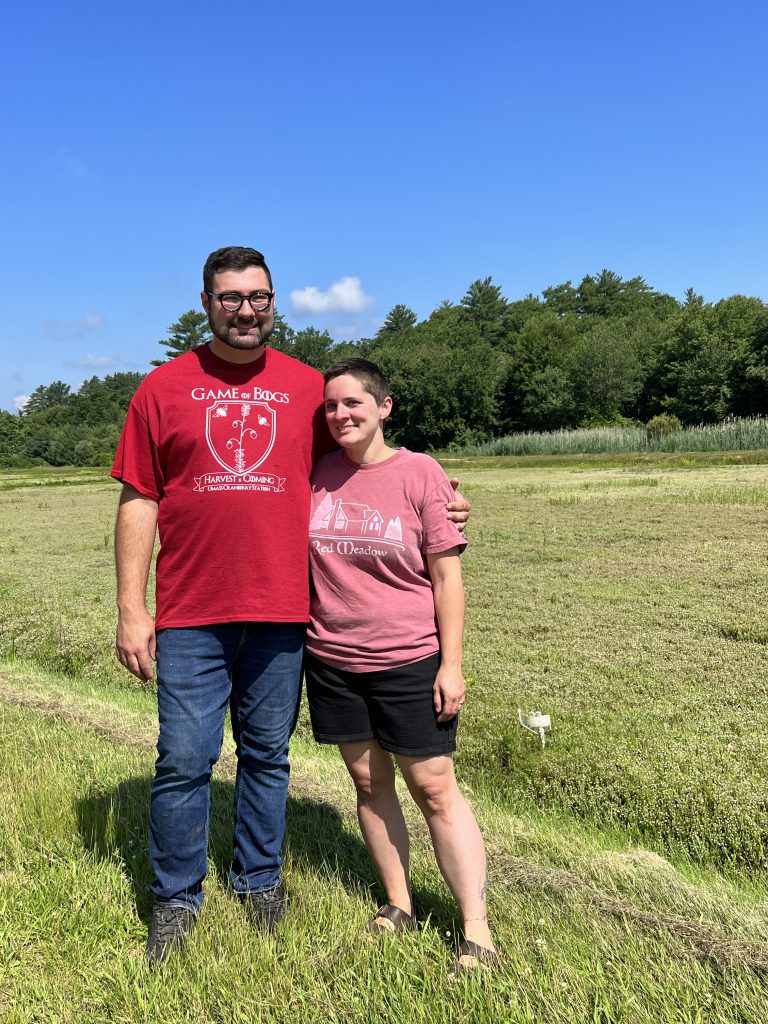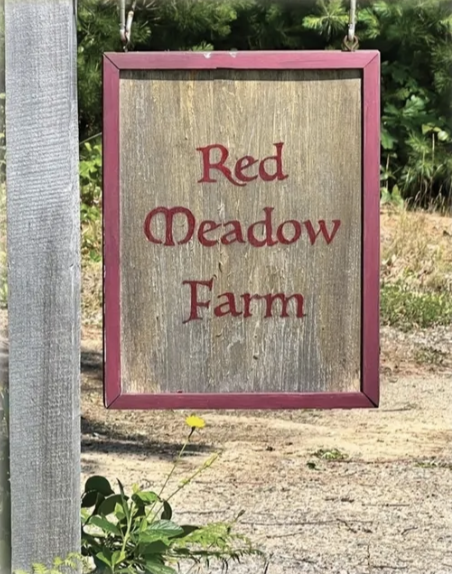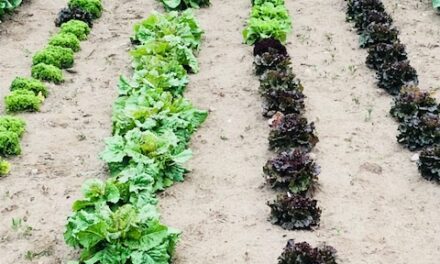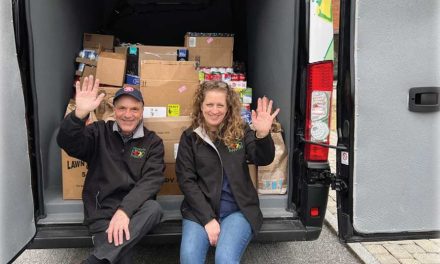
“Let not your life be wholly without an object, though it be only to ascertain the flavor of a cranberry, for it will not be only the quality of an insignificant berry that you will have tasted, but the flavor of your life to that extent, and it will be such a sauce as no wealth can buy.”
– Henry David Thoreau
A Cranberry Primer
 Massachusetts has enjoyed Vaccinium macrocarpon for more than 12,000 years, dating back to southeastern Wampanoag tribes harvesting sasumuneash each year. The formal cultivation of cranberries began in 1816. Revolutionary War veteran Captain Henry Hall noticed the wild berries near his Dennis home grew better when sand blew over them than did those that were left uncovered. He subsequently dug his own bogs and transplanted some cranberry vines, intentionally spreading sand over them. This practice resulted in crop success that was noticed by neighboring farmers and the technique was quickly adopted.
Massachusetts has enjoyed Vaccinium macrocarpon for more than 12,000 years, dating back to southeastern Wampanoag tribes harvesting sasumuneash each year. The formal cultivation of cranberries began in 1816. Revolutionary War veteran Captain Henry Hall noticed the wild berries near his Dennis home grew better when sand blew over them than did those that were left uncovered. He subsequently dug his own bogs and transplanted some cranberry vines, intentionally spreading sand over them. This practice resulted in crop success that was noticed by neighboring farmers and the technique was quickly adopted.
The period between the late 19th century and the middle of the 20th century saw explosive growth and evolution for the Massachusetts cranberry industry. The Cape Cod Cranberry Growers’ Association was formed in 1888, and today represents 330 growers across the state. UMass set up a cranberry research station in Wareham in 1910. Ocean Spray set up shop in Hanson in 1930 as a grower-owned cooperative. The year 1947 saw mechanical harvesters replace hand-picking, massively speeding up the process. The cranberry industry was booming.
On November 9, 1957, Arthur S. Flemming nearly destroyed the entire $50 million industry single-handedly. As the Secretary of Health, Education, and Welfare, he issued a statement warning consumers (in his words, “the housewife”) of the dangers of aminotriazole, a chlorophyll inhibitor used as an herbicide recently implemented by the industry to help eliminate plant life threatening the bogs.
Testing of Pacific Northwest crops had shown trace amounts of the chemical, which was classified as a cancer-causing agent. Despite Ocean Spray’s assertions that one would have to consume an absurdly high amount of cranberries to face any real danger of exposure, Mr. Flemming issued the statement that if the “housewife” couldn’t determine exactly where her berries came from, “to be on the safe side, she doesn’t buy.”
The effect of that advice was practically instantaneous and nearly crippling. Almost overnight, sales of fresh cranberries plunged 63%. Canned cranberries hit a year-over-year sales drop of 71%. Worse still, market research showed nearly half of all cranberry consumers intended never to buy the berry again. The $50 million industry was in trouble. Efforts to petition the FDA to loosen restrictions on acceptable levels in testing were roundly rejected by the agency, with one researcher commenting, “I do not believe that one can establish a safe dose of carcinogens.” Tons of the harvested fruit were captured by the FDA and kept for testing. The future of Thanksgiving dinner’s greatest sidekick was imperiled, to say the least.
While Flemming caused the problem, he also helped solve it. Just days before Thanksgiving, his department struck a deal with the FDA to release any fruits that had tested negative. While too late to make any positive impact on the season, that release combined with a $10 million government fund for cranberry farmers helped the industry begin to recover the following year. A full recovery would take a few years.
A New Generation of Cranberry Farmers
Today, Massachusetts is the second-biggest grower of cranberries in the country, with more than 14,000 acres planted. While larger companies like Ocean Spray and Decas Cranberries have established commercial operations, many who farm berries are not corporate.

Jordan and Equus Trundy represent a new generation of farmers in Massachusetts, diving headlong into the rigors and challenges of farm life. Not for the money or the easy work—cranberry farming doesn’t offer much of either. They do it to make a valuable contribution to a historically significant local industry.
“Cranberries are a big part of Massachusetts heritage, and everyone should be a part of it,” Equus asserts. Jordan affirms the sentiment. “There is tremendous pride around here in growing cranberries. We’re proud of what we do to preserve history,” he adds.
They found their home on the real estate website Zillow. The purchase price included the bogs and the Red Meadow Farm business, which has been in existence for more than 40 years. As part of purchasing the 17-acre property, the seller agreed to teach them everything about the seven acres of bogs they needed to know for the first harvest.
While they have no formal training or experience in commercial farming, Jordan grew up working in the blueberry fields of his home state, Maine. Equus spent her youth working in stables, following a passion for horses that would inspire her to adopt a name that means “horse” in Latin. The feel of working the land and interacting with nature helps them feel confident they will succeed.
Does the lack of proper training or experience in cranberry farming concern the young couple? Hardly. Jordan smiles at the challenges they face. “We’ll figure it out. However you grow cranberries, we’ll figure it out.”
Fortunately, they have a wonderful ally aiding them in their education—the community. Happy to share knowledge and best practices, all the neighboring farmers are ready to help, a trait that caught Equus a little off guard at first. “There’s a community aspect to cranberries that I didn’t expect. Everyone is just so excited to talk about cranberries!”
BOG Life
 All the farms work together in every aspect of the business, which Equus sums up as “a rising tide lifts all berries.” Not only is the mantra applicable to neighborly camaraderie, it is also quite literal. The water each farm uses to flood the bogs comes from the same source. The local Weweantic River runs through each farm, connecting them. An aquatic success or challenge for one farm is a success or challenge for all farms.
All the farms work together in every aspect of the business, which Equus sums up as “a rising tide lifts all berries.” Not only is the mantra applicable to neighborly camaraderie, it is also quite literal. The water each farm uses to flood the bogs comes from the same source. The local Weweantic River runs through each farm, connecting them. An aquatic success or challenge for one farm is a success or challenge for all farms.
October will be the Trundys’ third harvest. They will divert water from the river into their bogs using plain old wooden boards to create dams, a decidedly low-tech method. While some berry collection is done by hand, the bulk of the work is handled by Slap Chop, an imposing harvester that spends most of the year hiding in the back. Painted blood red, one can only imagine the howls and shudders such a machine makes when rumbling down the rows. Seemingly sensing the notion, Equus confirms my suspicions. “It’s a violent little machine.”
To supplement their income, they also grow raspberries, blackberries, blueberries, apples, pears, and all sorts of veggies. Whatever they don’t consume is for sale in the small stand out front. An apiary was added, and now nine bee colonies live in hives the Trundys built themselves.
Agritourism was added last year, and it was a complete success. People came from all over the country to get a taste of bog life. They could wade in and experience many aspects of the process, save for piloting Slap Chop. Jordan and Equus were amazed at the misconceptions many people had. “People see this as idyllic,” Equus notes. “They are often surprised by the reality of how cranberries are grown and harvested. They get excited, and there are TONS of questions!”
Where do the Trundys see themselves in the future? Growing Red Meadow Farm, expanding their business to bring their ideas to fruition. More agritourism, more agriculture, and of course, more cranberries.
Red Meadow Farm
213 Meadow Street, Carver, MA 02330
(508) 500-1001 www.RedMeadowFarm.net
Adam Centamore is a South Shore culinary writer and educator. When he’s not writing or teaching seminars, he’s trying to develop the best cranberry sauce recipe in time for the holidays. He can be reached on Instagram at @eatdrinklearn.







